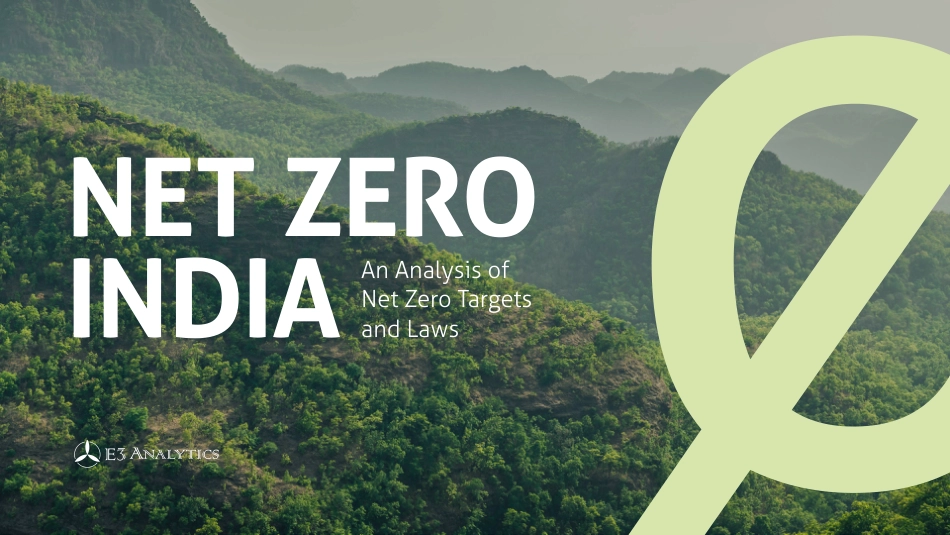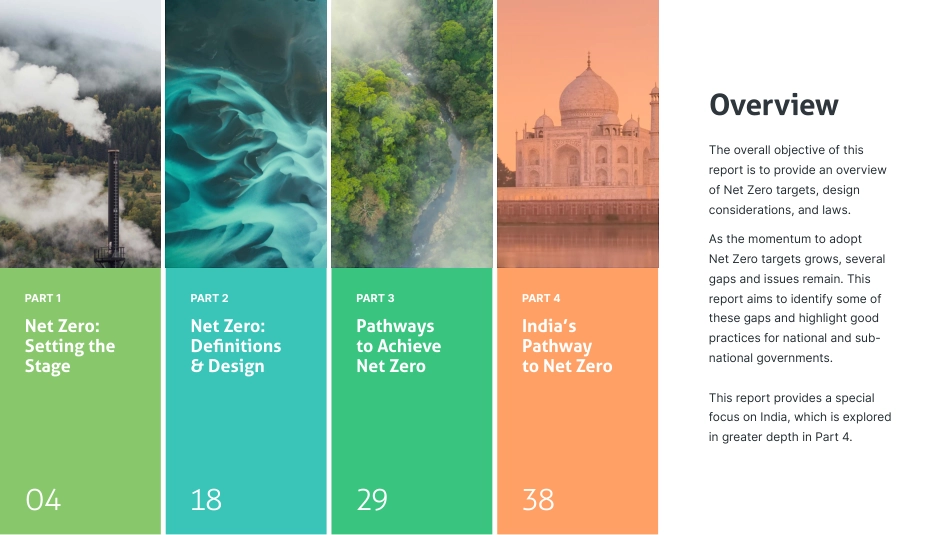NET ZERO INDIAAn Analysis of Net Zero Targets and LawsAcknowledgementsLead Author: Toby D. CoutureThe research and analysis conducted for this report were supported by GIZ India, in cooperation with the TUEWAS Project. A special thanks to Joseph Thomas, Axel P. Henderson, and Alice Goyer for their support with research and data analysis.Copyright: E3 Analytics, November 2023 Design and Layout: Hot Ice Creative StudioPhoto Credits: 1,2: Homesh / AdobeStock; 4: Jon Anders Wiken / AdobeStock; 5: Baranov / AdobeStock; 8: Zamrznuti tonovi / AdobeStock; 10: Sebastián Hernández / AdobeStock; 11: Roxana / AdobeStock; 12: disq / AdobeStock; 15: andreiuc88 / AdobeStock; 18: eVEN / AdobeStock; 19: Cyril / AdobeStock; 20: Deemerwha studio / AdobeStock; 22: Kalyakan / AdobeStock; 23: Robert Kneschke / AdobeStock; 25: Tony / AdobeStock; 26: Artinun / AdobeStock; 28: Андрей Трубицын / AdobeStock; 29: David Katz / AdobeStock; 30: Keith Klosterman / AdobeStock; 38: Boris Stroujko / AdobeStock; 39: sarath / AdobeStock; 42: yurakrasil / AdobeStock; 45: Joerg Boethling / Alamy Stock Photo; 46: Beatrice Prève / AdobeStock; 50: Stéphane Bidouze / AdobeStock; Overview The overall objective of this report is to provide an overview of Net Zero targets, design considerations, and laws. As the momentum to adopt Net Zero targets grows, several gaps and issues remain. This report aims to identify some of these gaps and highlight good practices for national and sub-national governments.This report provides a special focus on India, which is explored in greater depth in Part 4.PART 1Net Zero: Setting the Stage04PART 3Pathways to Achieve Net Zero29PART 2Net Zero: Definitions & Design18PART 4India’s Pathway to Net Zero3...



